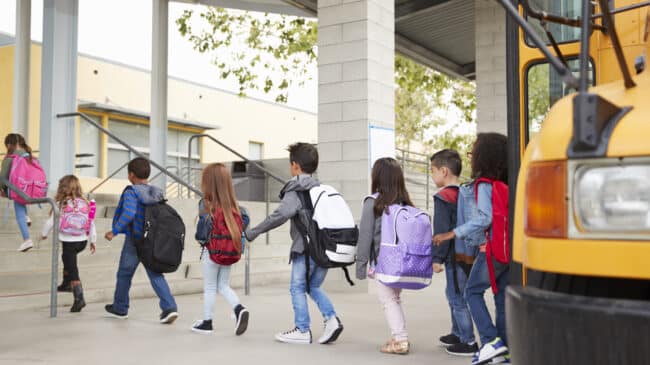Kansas students’ public education options will no longer depend solely on where they live. The state’s new open enrollment law, effective this fall, requires school districts to accept transfer students as long as space is available. Open enrollment could help less affluent Kansas students access schools that are a better fit.
While this will not force students to attend different schools, the open enrollment policy will benefit families who cannot afford to move to neighborhoods inside the boundaries of highly-ranked public schools. Assigning schools based on place of residence effectively hides a secret cost of tuition—an expensive mortgage or rent. Open enrollment weakens the tie between housing and schooling so more students can access schools that are a better fit.
Students use open enrollment for a variety of reasons. Research from Texas and Florida showed that students transferred to higher-ranked school districts. Similarly, Wisconsin students used it to transfer to school districts with better academics. California students used open enrollment to access Advanced Placement (AP) and baccalaureate courses, shorten commutes, escape bullying, and enroll in schools that emphasized a particular education model, such as career preparation, according to reports by the state’s nonpartisan Legislative Analyst’s Office in 2016 and 2021.
Even though students in other states have benefited from open enrollment, some Kansas policymakers want to roll back mandatory open enrollment before it even begins. Proposals in the state legislature aim to significantly weaken the policy by no longer requiring all school districts to participate. If signed into law, these bills would let Kansas school districts opt out of open enrollment even when space is available at their schools, making participation voluntary. However, the public schools that opt out of open enrollment are often in the highest demand.
The superintendents of Olathe and Blue Valley school districts, two of Kansas’ best-performing districts, do not want to participate in open enrollment. In 2022, they testified:
“While we can certainly empathize with parents in lower-performing districts, both Blue Valley and Olathe are among the highest-performing districts in Kansas—indeed competing nationally—and, as such, would find our districts overwhelmed with requests from non-residents. Without intending to sound elitist, it is nonetheless true that housing costs in our districts often provide a check on resident student growth now.”
School district leaders know that residential assignment creates educational winners and losers based on where people can afford to live. Open enrollment data from other states supports this.
Some school districts in affluent suburban neighborhoods don’t participate in Ohio’s voluntary cross-district open enrollment program even when they have space, excluding urban and rural students. These denials are unfortunate since Ohio students who used open enrollment, especially those from high-poverty urban areas, saw higher achievement and increased on-time graduation rates.
Similarly, a 2023 report found that Los Angeles Unified School District’s open enrollment program positively affected student achievement and college enrollment.
Fears that open enrollment will overwhelm school districts or that students transferring out will siphon off important resources are often overwrought since most parents are satisfied with their public schools, according to a 2022 Gallup report. Data from Arizona, Wisconsin, and Florida, which have robust open enrollment laws, show that only about 10 percent of students use open enrollment to transfer schools on average.
Kansas students have much to gain from open enrollment. The state currently has one of the best open enrollment laws in the country. Kansas policymakers should continue supporting robust open enrollment and prioritizing students over systems.

